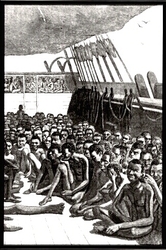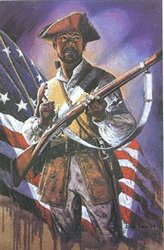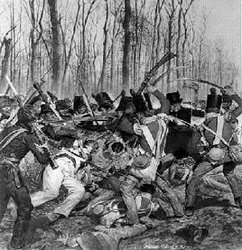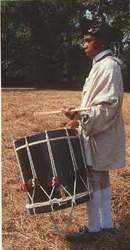African American Soldiers
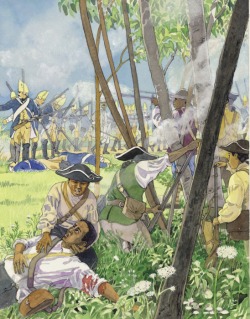
The Revolution’s Black Soldiers
In the early 1770s was a period of ruthless slavery in Virginia. It prompts the city of Williamsburg to establish s night watch in July 1772. This night watch apprehended to disorderly people, slaves and others. The slave restiveness increased in the colonies in September 1772. In June 1772, Lord Mansfield, Chief of Justice of the King’s Bench said that slavery is so odious, that nothing can be suffered to support it, but positive law. The law of England didn’t allow or approved of slavery. Mansfield ruled that the black must be discharged.
In January 1778, General Washington had given his approval to Rhode Island’s plan to raise a whole group of black slaves. The next five years, about 250 former slaves and freedmen served in the 1st Rhode Island Regiment. All the black units, the Bucks of America under Samuel Middleton, was the only black commissioned officer in the Continental Army. The state of Rhode Island bought African slaves willing to fight and become soldiers. In October 1780, Maryland had also accepted any slaves in shape between 16 and 40 years of age, who volunteers to enter the service. In 1781, New York began to recruit African slaves.
The Virginia Legislature refused to arm slaves. In October 1780, it instead it granted every African slaves who enlisted for the duration of the war 300 acres of land and be a free man. The slave bonus would be raised by a special tax and planters who owned more than 20 slaves. The use of slaves as bounties later became known as “Sumter’s Law.” General Thomas Sumter began offering Tory slaves as bonuses in South Carolina which had many slaves in April 1781. New York had begun to recruit black volunteers in March 1777. Many young slaves were help serving also. Children of 11, 12, 13 years served as drummers and fifers. Hessian records from 1777 to 1783 show 83 black drummers as well as 3 fifers.
In France, Africans had served in the military since the late 17th century. In July, Marquis de Lafayette had been spying on Cornwallis for months. His successd was due to James Armistread. He was born around 1760 when he approached Lafayette in Williamsburg. Armistread had the permission from his master to serve Marquis as a servant. But Lafayette had plans for him. He had to use him to get some reliable intelligence about Cornwallis’s plans.
Works Sited:
http://www.americanrevolution.org/blk.html
In the early 1770s was a period of ruthless slavery in Virginia. It prompts the city of Williamsburg to establish s night watch in July 1772. This night watch apprehended to disorderly people, slaves and others. The slave restiveness increased in the colonies in September 1772. In June 1772, Lord Mansfield, Chief of Justice of the King’s Bench said that slavery is so odious, that nothing can be suffered to support it, but positive law. The law of England didn’t allow or approved of slavery. Mansfield ruled that the black must be discharged.
In January 1778, General Washington had given his approval to Rhode Island’s plan to raise a whole group of black slaves. The next five years, about 250 former slaves and freedmen served in the 1st Rhode Island Regiment. All the black units, the Bucks of America under Samuel Middleton, was the only black commissioned officer in the Continental Army. The state of Rhode Island bought African slaves willing to fight and become soldiers. In October 1780, Maryland had also accepted any slaves in shape between 16 and 40 years of age, who volunteers to enter the service. In 1781, New York began to recruit African slaves.
The Virginia Legislature refused to arm slaves. In October 1780, it instead it granted every African slaves who enlisted for the duration of the war 300 acres of land and be a free man. The slave bonus would be raised by a special tax and planters who owned more than 20 slaves. The use of slaves as bounties later became known as “Sumter’s Law.” General Thomas Sumter began offering Tory slaves as bonuses in South Carolina which had many slaves in April 1781. New York had begun to recruit black volunteers in March 1777. Many young slaves were help serving also. Children of 11, 12, 13 years served as drummers and fifers. Hessian records from 1777 to 1783 show 83 black drummers as well as 3 fifers.
In France, Africans had served in the military since the late 17th century. In July, Marquis de Lafayette had been spying on Cornwallis for months. His successd was due to James Armistread. He was born around 1760 when he approached Lafayette in Williamsburg. Armistread had the permission from his master to serve Marquis as a servant. But Lafayette had plans for him. He had to use him to get some reliable intelligence about Cornwallis’s plans.
Works Sited:
http://www.americanrevolution.org/blk.html
